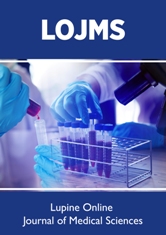
Lupine Publishers Group
Lupine Publishers
Menu
ISSN: 2641-1725
Conceptual Paper(ISSN: 2641-1725) 
Analyzing Near to Death Experience (NDE) Questions & Answers Corresponding Interview with Prof. Dr. Alejandro Parra, the Author of Book: The Last Farewell Embrace Volume 4 - Issue 4
Samah Khaled Zahran*
- Personality and social psychologist, Ain Shams University, Egypt
Received: January 24, 2020; Published: January 31, 2020
*Corresponding author: Samah Khaled Zahran, Personality and social psychologist, Ain Shams University, Egypt
DOI: 10.32474/LOJMS.2020.04.000191
First of all, congratulations Dr. Parra for your recent book: The Last Farewell Embrace: Spirituality, Near Death Experiences,
and Other Extraordinary Events Among Nurses (NOVA, 2019). The book serves as a guide for nurses and physicians to treat patients
about to die, by summarizing dozens of such cases. Plus, it acts as a guide also for whom searching to explore impressive stories of
extraordinary experiences. Finally, it is the first Spanish book manipulating such topic.
To zoom in to your vision, and briefly introduce your book to our journal readers, I would like to establish this dialogue with you:
Q1: Does WHO Recognize Spiritual Health?
- Q1: Does WHO Recognize Spiritual Health?
- Q2: To What Extent Spiritual Health Affect Mental, Happiness and Physical Status?
- Q3: Many Confuse Between Spiritual and Religion, so If We would like to Define the Difference in One Sentence, What Will We Say?
- Q4: Are NDE symptoms’ the Same among All Subjects, Variables Differences; as Age, Gender, Illness Type, etc.?
- Q5 How did You Measure Seeing Fields, Lights, and Vapors?
- Q6 What is the Difference between Mental Status of Near to Death One and Ill One?
- Q7 Which Kinds of Animals may Anticipate Death; Domestic Ones?
- Finally, Any Comment Else, you like to Add….
Spiritual health in nursing practices involve the problem of integrating faith and belief systems into clinical practice, along with the impact of prayer and meditation on reducing stress and the use of spiritual practices to combat depression. We also examine religious conversion as a means of reducing addictions, and mystical experiences as indicators of mental health (as opposed to psychotic symptoms), where mental health, wellbeing, and subjectivity allow us to understand how and why spiritual practices and belief systems can be a bridge to the psychological transformation of a terminal patient. Training programs in psychology, psychiatry, and psychotherapeutic practice have seldom ‒if ever‒ included religious or spiritual issues. Most mental health professionals receive no education in or specific knowledge related to religious or spiritual matters during their training, and even most psychotherapists have little interest in this area, deliberately avoid the subject of religion, or address it based on little experience.
Q2: To What Extent Spiritual Health Affect Mental, Happiness and Physical Status?
- Q1: Does WHO Recognize Spiritual Health?
- Q2: To What Extent Spiritual Health Affect Mental, Happiness and Physical Status?
- Q3: Many Confuse Between Spiritual and Religion, so If We would like to Define the Difference in One Sentence, What Will We Say?
- Q4: Are NDE symptoms’ the Same among All Subjects, Variables Differences; as Age, Gender, Illness Type, etc.?
- Q5 How did You Measure Seeing Fields, Lights, and Vapors?
- Q6 What is the Difference between Mental Status of Near to Death One and Ill One?
- Q7 Which Kinds of Animals may Anticipate Death; Domestic Ones?
- Finally, Any Comment Else, you like to Add….
Spirituality is a dimension of human existence that includes the sacred, the meaning of life, transcendence, relationships with others, and various beliefs and values of an ethical and religious nature. Currently, the health sciences are interestedin investigating the implications of spirituality for health in general, and for psychotherapy in particular. While disciplines such as parapsychology, transpersonal psychology, and spirituality continue to be contested and controversial in the context of clinical psychology, psychiatry, and psychoanalysis, it would be absurd ‒and dangerous‒ to ignore, underestimate, or, especially, ridicule these experiences on the pretext that they cannot be clearly understood within our current scientific paradigm or that they are the result of fantasy, hallucination, deception, or self-deception. Many health professionals do not feel prepared to meet the spiritual needs of their patients due to lack of preparation and education in this area. Although nurses recognize the need for comprehensive care, some feel uncomfortable responding to questions about spirituality or religion. Knowledge of spirituality is not a criterion for most nursing school training, although this may not be true for all. Specific education in the territory of the spiritual can teach nursing students the importance of the spiritual needs of patients, as well as how to assess and meet these needs. In addition, nurses should also explore their own spirituality in relation to care, as this can have a major impact on the nurse’s awareness and sensitivity to the spiritual needs of patients. In sum, the nursing profession must develop nurses who are competent to evaluate and respond to the spiritual needs of patients.
Q3: Many Confuse Between Spiritual and Religion, so If We would like to Define the Difference in One Sentence, What Will We Say?
- Q1: Does WHO Recognize Spiritual Health?
- Q2: To What Extent Spiritual Health Affect Mental, Happiness and Physical Status?
- Q3: Many Confuse Between Spiritual and Religion, so If We would like to Define the Difference in One Sentence, What Will We Say?
- Q4: Are NDE symptoms’ the Same among All Subjects, Variables Differences; as Age, Gender, Illness Type, etc.?
- Q5 How did You Measure Seeing Fields, Lights, and Vapors?
- Q6 What is the Difference between Mental Status of Near to Death One and Ill One?
- Q7 Which Kinds of Animals may Anticipate Death; Domestic Ones?
- Finally, Any Comment Else, you like to Add….
Religion is defined as specific practices and beliefs that may be associated with an organized group; spirituality‒ in contrast ‒ refers t oa person’s search for or an expression of his or her connection with a larger and more significant context. Spirituality, which is a natural part of human existence, can mean different things to different people. Being spiritual is a part of the human condition, since it forms the root of one’s identity and gives meaning to life.
Q4: Are NDE symptoms’ the Same among All Subjects, Variables Differences; as Age, Gender, Illness Type, etc.?
- Q1: Does WHO Recognize Spiritual Health?
- Q2: To What Extent Spiritual Health Affect Mental, Happiness and Physical Status?
- Q3: Many Confuse Between Spiritual and Religion, so If We would like to Define the Difference in One Sentence, What Will We Say?
- Q4: Are NDE symptoms’ the Same among All Subjects, Variables Differences; as Age, Gender, Illness Type, etc.?
- Q5 How did You Measure Seeing Fields, Lights, and Vapors?
- Q6 What is the Difference between Mental Status of Near to Death One and Ill One?
- Q7 Which Kinds of Animals may Anticipate Death; Domestic Ones?
- Finally, Any Comment Else, you like to Add….
They are not “symptoms”. They are exceptional human experiences and avoid interpreting the NDE as a symptom of psychopathology. There is a well-known side effect of the NDE, which is potentially important, particularly for spiritual counselors, namely: changes in the spirituality and/or the religiousness of individuals who have experienced an NDE. Several researchers have found that such experiences may produce profound changes in people’s spiritual beliefs, and that these can increase or decrease their degree of participation in formal religions. In response to these side effects, patients may want to seek spiritual or religious guidance, which means that their spiritual counselors should have information about NDEs and know how to respond when patients reveal these experiences.
Q5 How did You Measure Seeing Fields, Lights, and Vapors?
- Q1: Does WHO Recognize Spiritual Health?
- Q2: To What Extent Spiritual Health Affect Mental, Happiness and Physical Status?
- Q3: Many Confuse Between Spiritual and Religion, so If We would like to Define the Difference in One Sentence, What Will We Say?
- Q4: Are NDE symptoms’ the Same among All Subjects, Variables Differences; as Age, Gender, Illness Type, etc.?
- Q5 How did You Measure Seeing Fields, Lights, and Vapors?
- Q6 What is the Difference between Mental Status of Near to Death One and Ill One?
- Q7 Which Kinds of Animals may Anticipate Death; Domestic Ones?
- Finally, Any Comment Else, you like to Add….
The experience of seeing fields of energy, lights, vapors, and other emanations around a patient is a common one for some nurses, although their number in the survey turned out to be one of the lowest (5.4%) compared to other experiences. Some nurses even revealed that they could take pictures of those emanations. Several nurses who were interviewed described similar luminous phenomena around dying patients or after their death. nurses described seeing lights floating, seeing the patients’“aura” or lights, mists, or vapors around their bodies, noticing changes in ambient temperature, smelling the aroma of flowers, observing watches that stopped or objects that fell or swayed, and noticing displaced, birds, flies, or cats that appeared‒ or were seen standing still ‒ facing or next to a patient about to die (or who then died).
Q6 What is the Difference between Mental Status of Near to Death One and Ill One?
- Q1: Does WHO Recognize Spiritual Health?
- Q2: To What Extent Spiritual Health Affect Mental, Happiness and Physical Status?
- Q3: Many Confuse Between Spiritual and Religion, so If We would like to Define the Difference in One Sentence, What Will We Say?
- Q4: Are NDE symptoms’ the Same among All Subjects, Variables Differences; as Age, Gender, Illness Type, etc.?
- Q5 How did You Measure Seeing Fields, Lights, and Vapors?
- Q6 What is the Difference between Mental Status of Near to Death One and Ill One?
- Q7 Which Kinds of Animals may Anticipate Death; Domestic Ones?
- Finally, Any Comment Else, you like to Add….
It is evident that the mental state of the dying and the phenomena that occur at death must be taken seriously, which requires improvements in spiritual care practices at the end of life. Doctors in general, nurses, geriatricians, and workers in palliative care are responsible for the care of the dying and those who mourn them; however, the spiritual care of the dying and knowledge about these experiences still do not form part of education in palliative care. For example, “terminal lucidity” is the name given to the unexpected return of mental clarity and memory shortly before death in patients suffering from serious psychiatric and neurological disorders.
Q7 Which Kinds of Animals may Anticipate Death; Domestic Ones?
- Q1: Does WHO Recognize Spiritual Health?
- Q2: To What Extent Spiritual Health Affect Mental, Happiness and Physical Status?
- Q3: Many Confuse Between Spiritual and Religion, so If We would like to Define the Difference in One Sentence, What Will We Say?
- Q4: Are NDE symptoms’ the Same among All Subjects, Variables Differences; as Age, Gender, Illness Type, etc.?
- Q5 How did You Measure Seeing Fields, Lights, and Vapors?
- Q6 What is the Difference between Mental Status of Near to Death One and Ill One?
- Q7 Which Kinds of Animals may Anticipate Death; Domestic Ones?
- Finally, Any Comment Else, you like to Add….
A frequent experience reported by caregivers and nurses in nursing homes relates to the behaviors of some animals ‒ for example, birds and cats, in the vicinity of a patient’s death. Animals seem to have a sense that gives them information before humans receive it. I also found some testimonies from family members of hospitalized patients whose dogs barked and were very restless, in close proximity to the moment of the death of their master.
Finally, Any Comment Else, you like to Add….
- Q1: Does WHO Recognize Spiritual Health?
- Q2: To What Extent Spiritual Health Affect Mental, Happiness and Physical Status?
- Q3: Many Confuse Between Spiritual and Religion, so If We would like to Define the Difference in One Sentence, What Will We Say?
- Q4: Are NDE symptoms’ the Same among All Subjects, Variables Differences; as Age, Gender, Illness Type, etc.?
- Q5 How did You Measure Seeing Fields, Lights, and Vapors?
- Q6 What is the Difference between Mental Status of Near to Death One and Ill One?
- Q7 Which Kinds of Animals may Anticipate Death; Domestic Ones?
- Finally, Any Comment Else, you like to Add….
It is important that nurses, as well as physicians, be informed
in greater detail about how to respond to patients who have such
experiences. This work, therefore, serves as a guide in the exploration
of these impressive stories and extraordinary experiences that have
come to light for the first time in medical literature.
Thanks for your time and answers, with all appreciation.

Top Editors
-
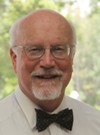
Mark E Smith
Bio chemistry
University of Texas Medical Branch, USA -
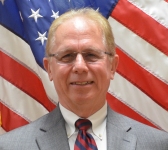
Lawrence A Presley
Department of Criminal Justice
Liberty University, USA -

Thomas W Miller
Department of Psychiatry
University of Kentucky, USA -
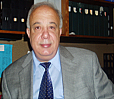
Gjumrakch Aliev
Department of Medicine
Gally International Biomedical Research & Consulting LLC, USA -
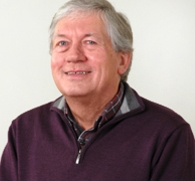
Christopher Bryant
Department of Urbanisation and Agricultural
Montreal university, USA -
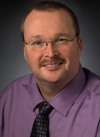
Robert William Frare
Oral & Maxillofacial Pathology
New York University, USA -
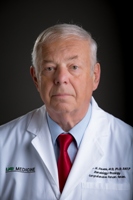
Rudolph Modesto Navari
Gastroenterology and Hepatology
University of Alabama, UK -
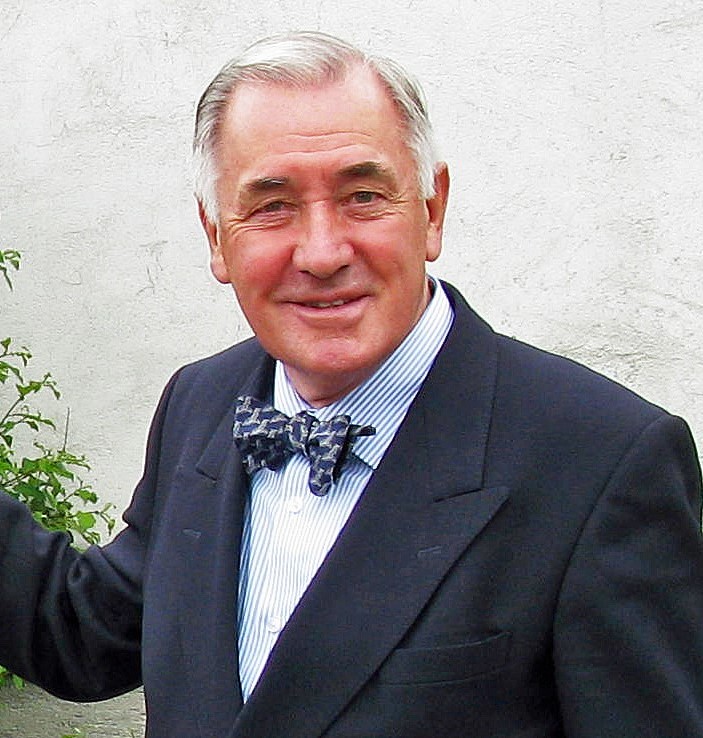
Andrew Hague
Department of Medicine
Universities of Bradford, UK -
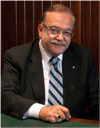
George Gregory Buttigieg
Maltese College of Obstetrics and Gynaecology, Europe -

Chen-Hsiung Yeh
Oncology
Circulogene Theranostics, England -
.png)
Emilio Bucio-Carrillo
Radiation Chemistry
National University of Mexico, USA -
.jpg)
Casey J Grenier
Analytical Chemistry
Wentworth Institute of Technology, USA -
Hany Atalah
Minimally Invasive Surgery
Mercer University school of Medicine, USA -

Abu-Hussein Muhamad
Pediatric Dentistry
University of Athens , Greece

The annual scholar awards from Lupine Publishers honor a selected number Read More...




